Blog
The fastest whales and dolphins in the ocean
Read moreWhich animals were most impacted by climate change in 2024?
Around one million animal and plant species are now threatened with extinction according to the Intergovernmental Science-Policy Platform on Biodiversity and Ecosystem Services (IPBES). How much is climate change to blame? As of 2024, it threatens over 14,000 species on the IUCN Red List, and projections suggest that if global temperatures increase by 2°C by 2100, about 18% of all species on land will face a high risk of going extinct. More sensitive animals will fare even worse, with over 30% of insect pollinators and salamanders facing high risks in this projection.
Which animals are currently most impacted by climate change? These 12 animals are among the most negatively affected by rising sea temperatures, melting ice, and changing weather patterns caused by climate change—and some have already gone extinct.
The Bramble Cay melomys (Melomys rubicola), also known as the Bramble Cay mosaic-tailed rat, is a rodent that recently went extinct due to climate change. Weighing only about 100 grams (3.5 ounces), this rodent was found only on the tiny island of Bramble Cay in the Great Barrier Reef, but its’ habitat was destroyed by rising sea levels. The Bramble Cay melomys is reportedly the first mammal to go extinct as a result of climate change.
The golden toad (Incilius periglenes) is a recently extinct toad species native to Costa Rica. The toad was a bright orange-yellow color, grew about 8 centimetres (3 inches) long, and could live for up to an estimated 10 years in the wild. It burrowed underground in the elfin cloud forest ecosystem.
Golden toads relied on having the right amount of rain to reproduce. If the rains were too heavy, larvae might have been stranded on the forest floor—but they also needed enough water to stay hydrated. Thanks to changing weather patterns, the golden toad became unable to reproduce.
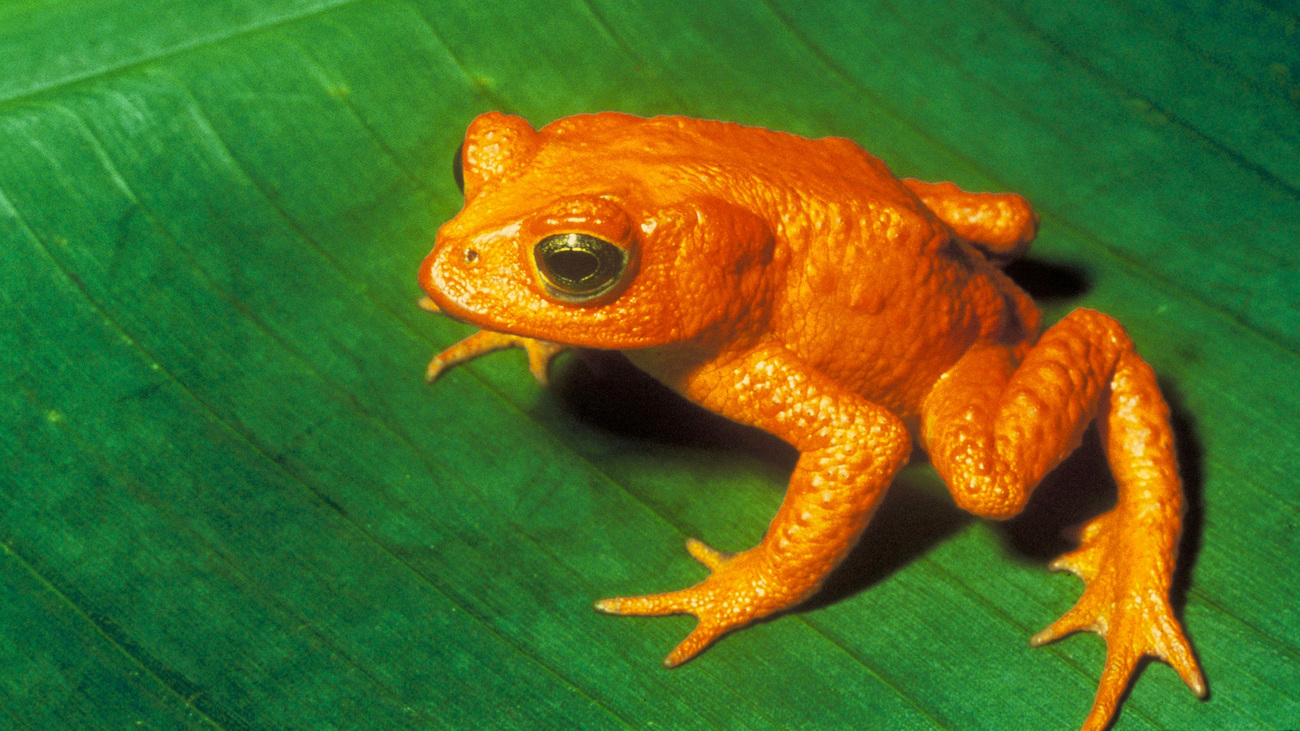
As a group, corals include some of the world’s most rapidly declining species. Their decreasing numbers are caused by mass bleaching, disease, and die-offs, due to rising ocean temperatures and ocean acidification. There are thousands of coral species around the world, and they build ocean ecosystems that provide a home to more than a quarter of marine life.
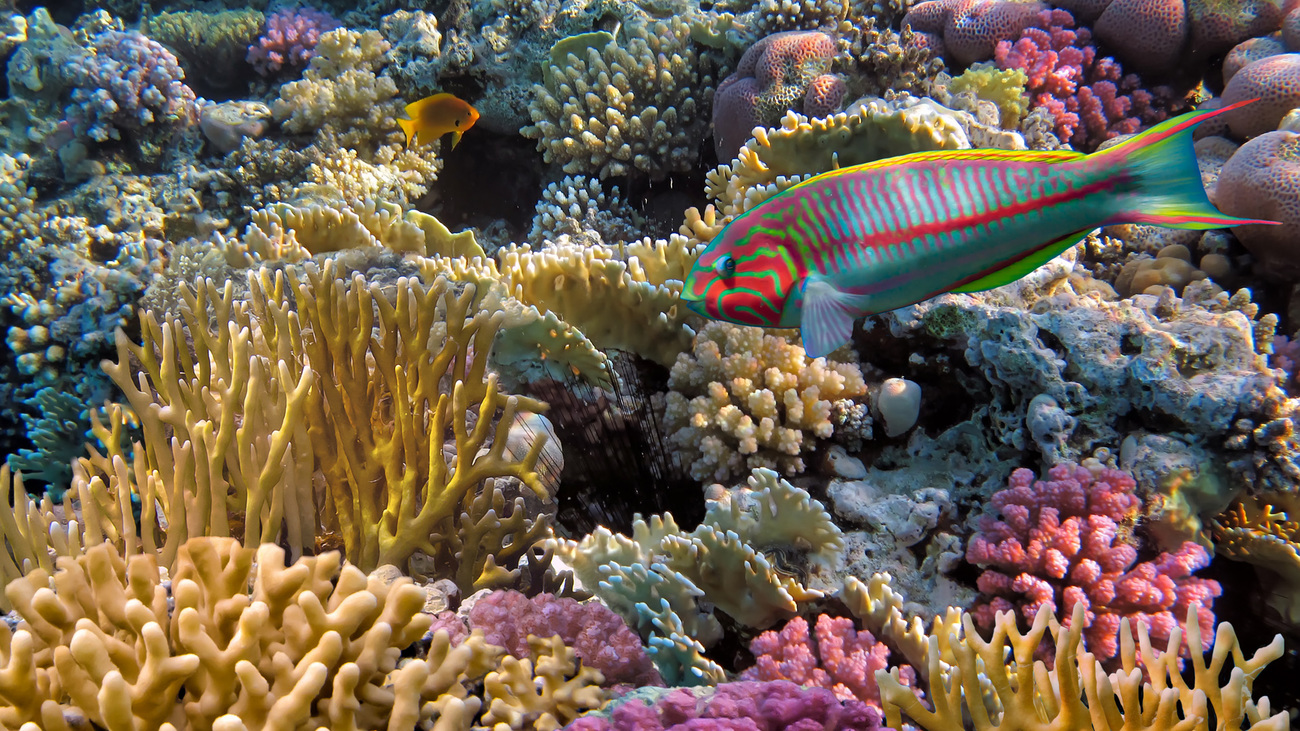
The Chinook salmon (Oncorhynchus tshawytscha) is a protected fish and the largest salmon in the Pacific, weighing about 20 to 60 kilograms (40 to 130 pounds). In addition to being threatened by commercial and recreational fishing, habitat degradation and loss, and impediments such as dams, the Chinook salmon is also at risk due to climate change. Chinook salmon are listed as endangered under the Endangered Species Act.
Rising ocean temperatures is the primary way in which climate change is affecting Chinook salmon. A loss of snow and glaciers means the flow of freshwater streams in the summer and fall is reduced, which makes it difficult for these salmon to migrate from freshwater streams, where they are born, to the ocean, where they live as adults. Warmer water temperatures also make salmon more susceptible to predation, parasites, and disease. Rising sea levels from melting ice also makes low-lying estuaries, on which these salmon rely in their juvenile stage, less suitable for them.
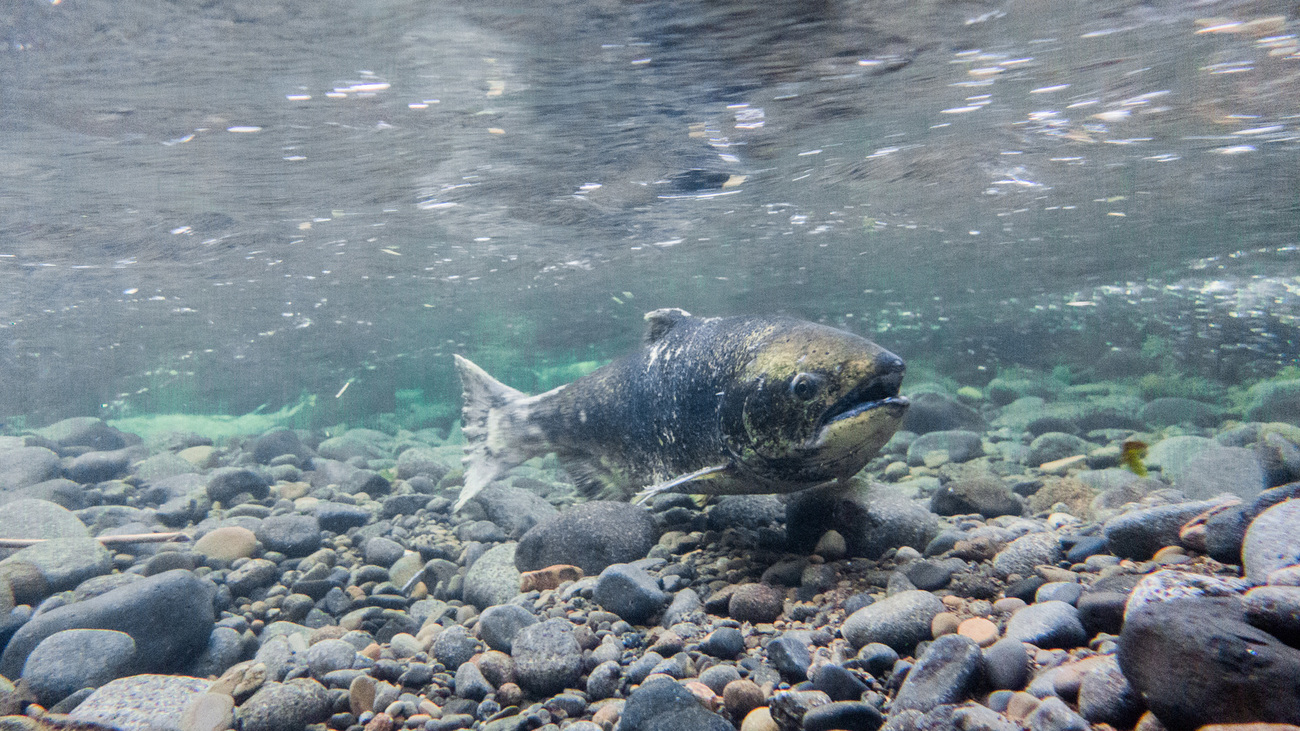
The green sea turtle (Chelonia mydas) is experiencing imbalanced sex ratios due to warmer temperatures during egg incubation in their shoreline habitats. Females now account for 99% of newly hatched green sea turtles on some nesting beaches. This poses a serious threat to their reproductive ability and survival as a species. Green sea turtles are listed as endangered on the IUCN Red List.
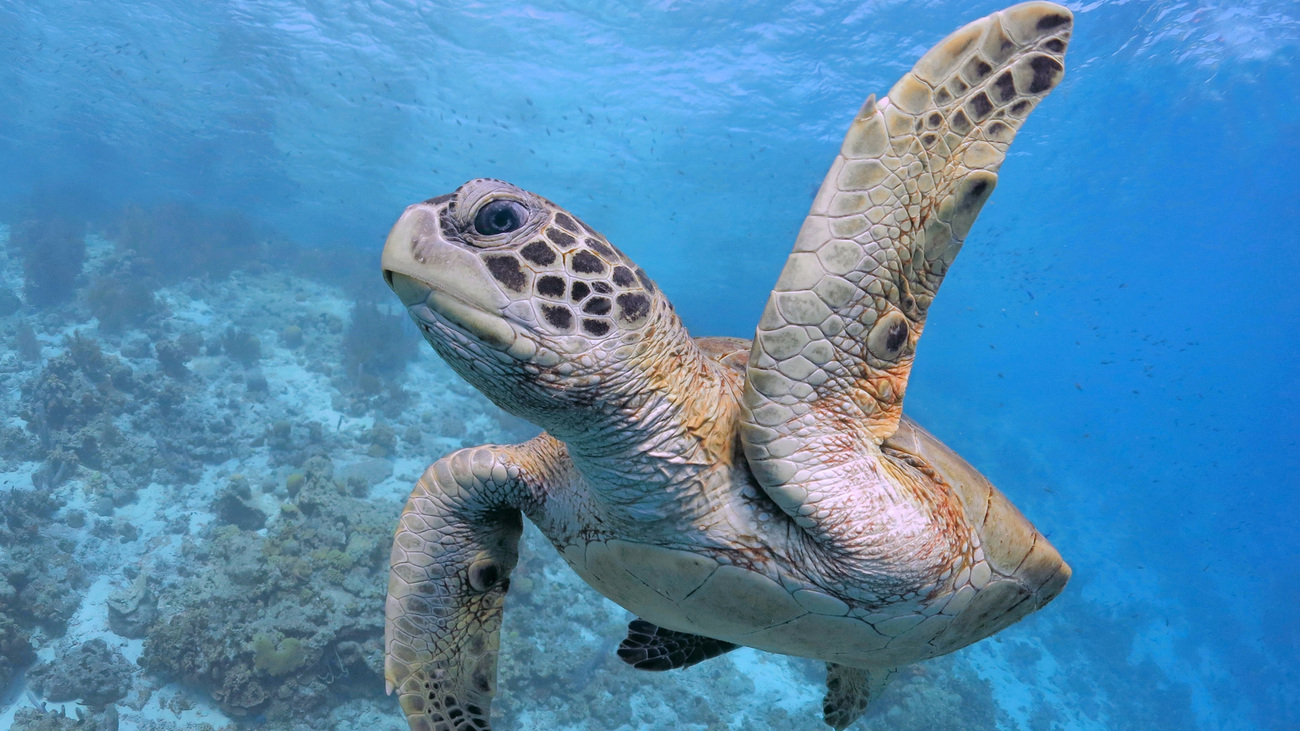
The famous polar bear (Ursus maritimus) is listed as vulnerable by the IUCN thanks to how their habitat, Arctic sea ice, is progressively disappearing every summer. Polar bears rely on the presence of ice for hunting, sleeping, mating, and dens for raising their cubs. Climate change is reducing the availability of Arctic sea ice, leaving polar bears in a threatened position as the ice continues to melt earlier in the spring and solidify later in the fall. This also creates a heightened risk of human-wildlife conflict, as polar bears are forced to spend more time on land instead of ice, which could lead them into contact with humans.
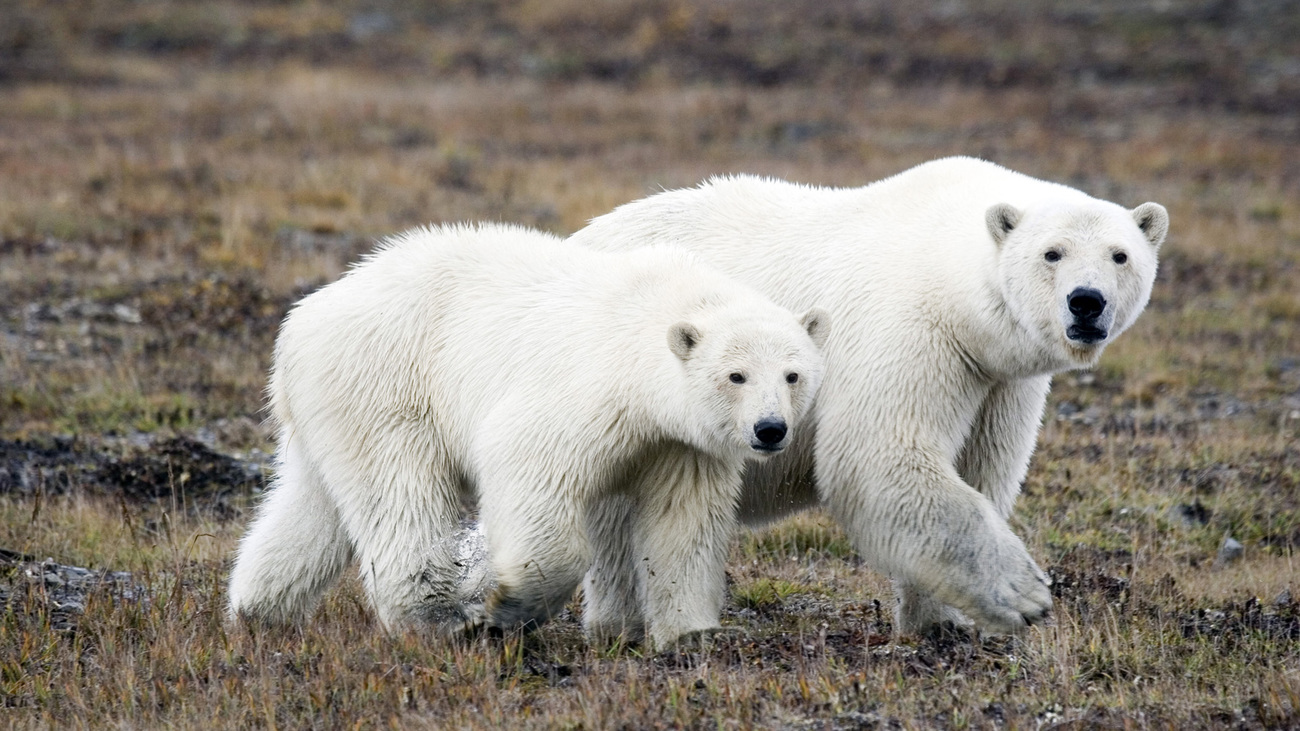
As the most widespread species of penguin, the Adélie penguin (Pygoscelis adeliae) lives along the entire coast of the Antarctic continent. Though they are listed by the IUCN as least concern, these penguins’ primary food source, krill, is dying. Krill are tiny crustaceans that live on the undersides of ice sheets, where they find refuge and eat algae. But as Antarctic sea ice continues to melt, krill populations are falling. This means there is less and less food available to support Adélie penguins and the other species that eat them, including certain whales.
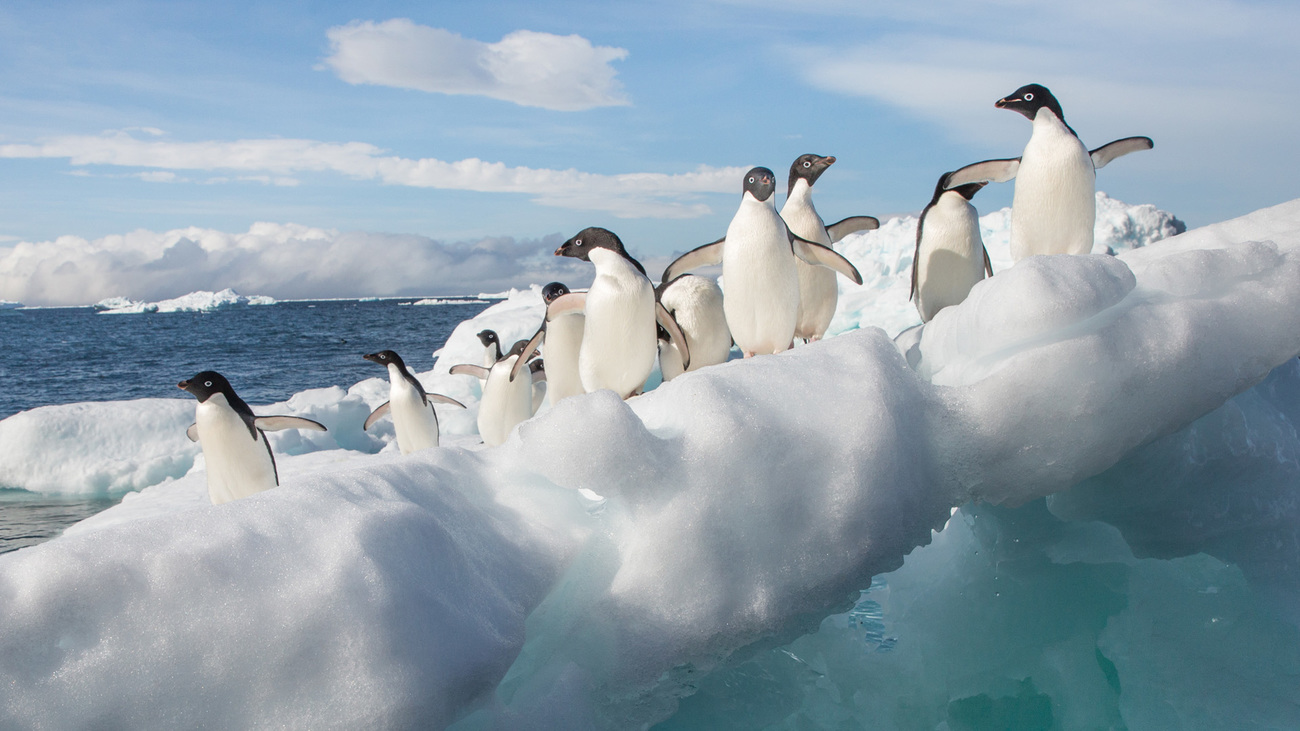
Bumblebees are some of our planet’s most important pollinators—without them, we wouldn’t have many of our vegetables, fruits, legumes, and other crops. But due to climate change, rising temperatures are forcing bumblebee populations further north to cooler climates. These temperature changes are also causing spring flowers to bloom earlier than normal, leaving less time for the bees to pollinate them.
Changes in weather patterns are also negatively impacting many bee species. Extreme rainfall and droughts can disrupt their foraging patterns, while disasters like floods and wildfires can destroy their habitats. As of 2024, 26 bumblebee species have threatened or endangered status.
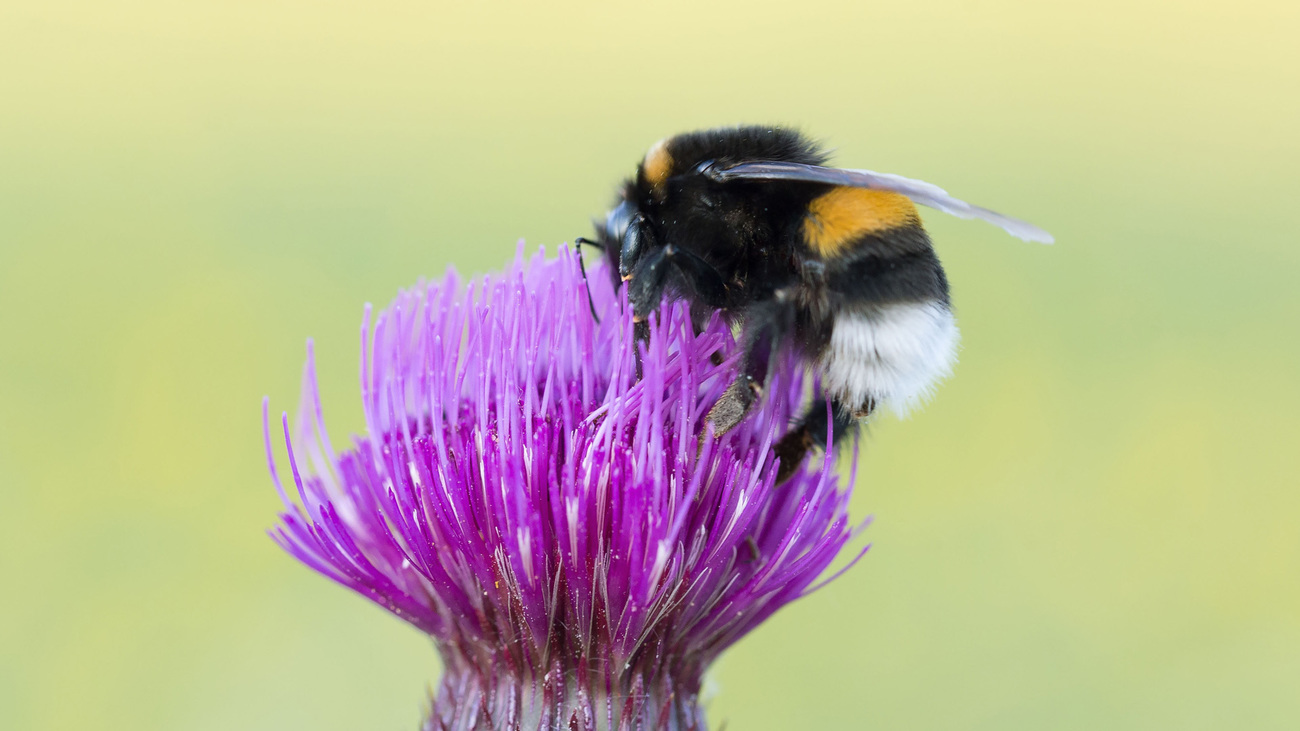
Whales are some of the most important animals for protecting our environment. Not only do they manage their underwater ecosystems by keeping prey populations in check, but as the largest animals on earth, they also sequester large amounts of carbon that would otherwise enter our atmosphere.
Keeping whale populations alive and thriving is crucial to combating climate change, but they are being negatively affected by rising sea temperatures. Whales rely on specific ocean temperatures for their migration, feeding, and reproduction. As temperatures rise, these habits are disrupted, and their survival becomes threatened.
Critically endangered North Atlantic right whales (Eubalaena glacialis), for instance, face serious climate-related threats. They are experiencing increased water temperatures and changing winds and ocean currents, their food sources are likely to move and become scarcer in the coming years, and because female North Atlantic right whales are travelling farther for food and navigating other threats, their birth rates are dropping. As of 2024, there are only about 370 North Atlantic right whales remaining.

The Asian elephant (Elephas maximus) is the only species of elephant living in India and Southeast Asia. Its habitat is being negatively impacted by both decreased rainfall and rising temperatures. Changing rainfall patterns have orphaned many Asian elephants due to flooding. Together, these threats have decreased the reproductive capacity of this already endangered species.
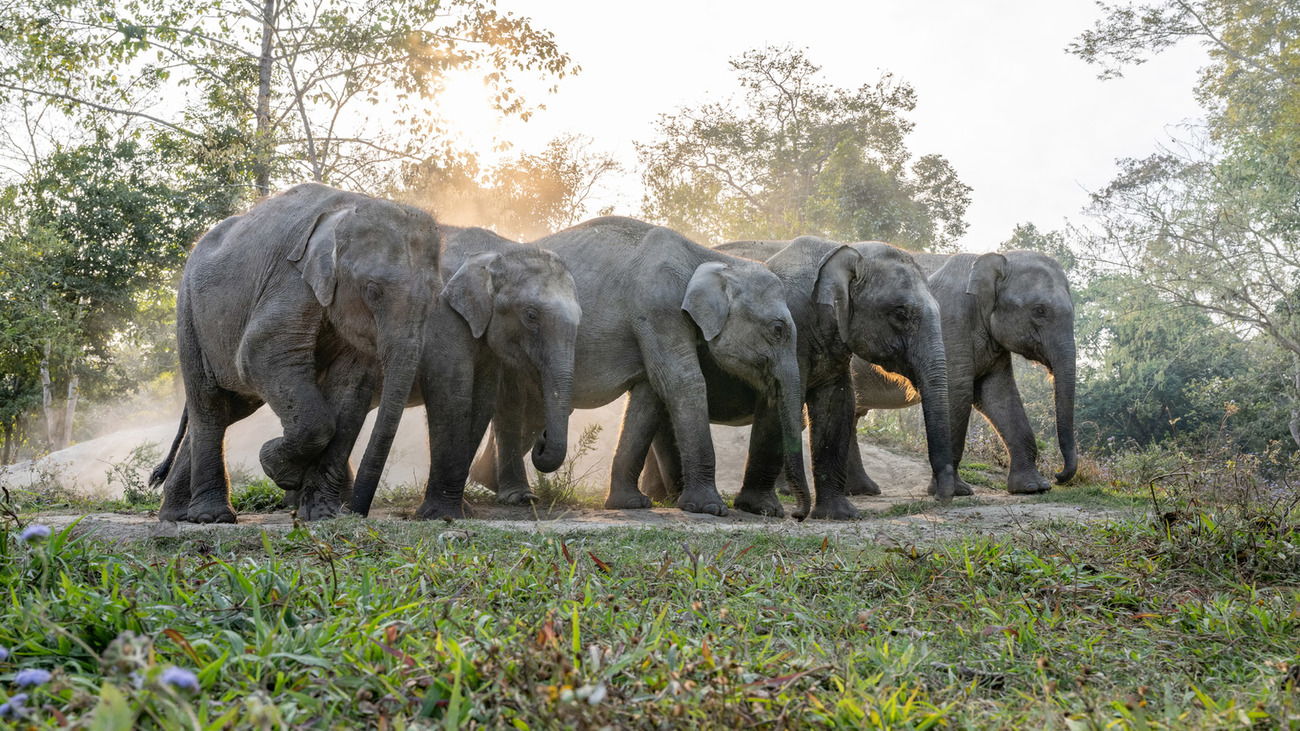
Shark species are experiencing difficulty hunting and a concerning embryo mortality rate as ocean temperatures and acidity rise worldwide due to climate change. In the Pacific Ocean in particular, rising temperatures force sharks northward by an average of 30 kilometers (19 miles) annually. This disrupts the balance of marine ecosystems that depend on sharks as apex predators.
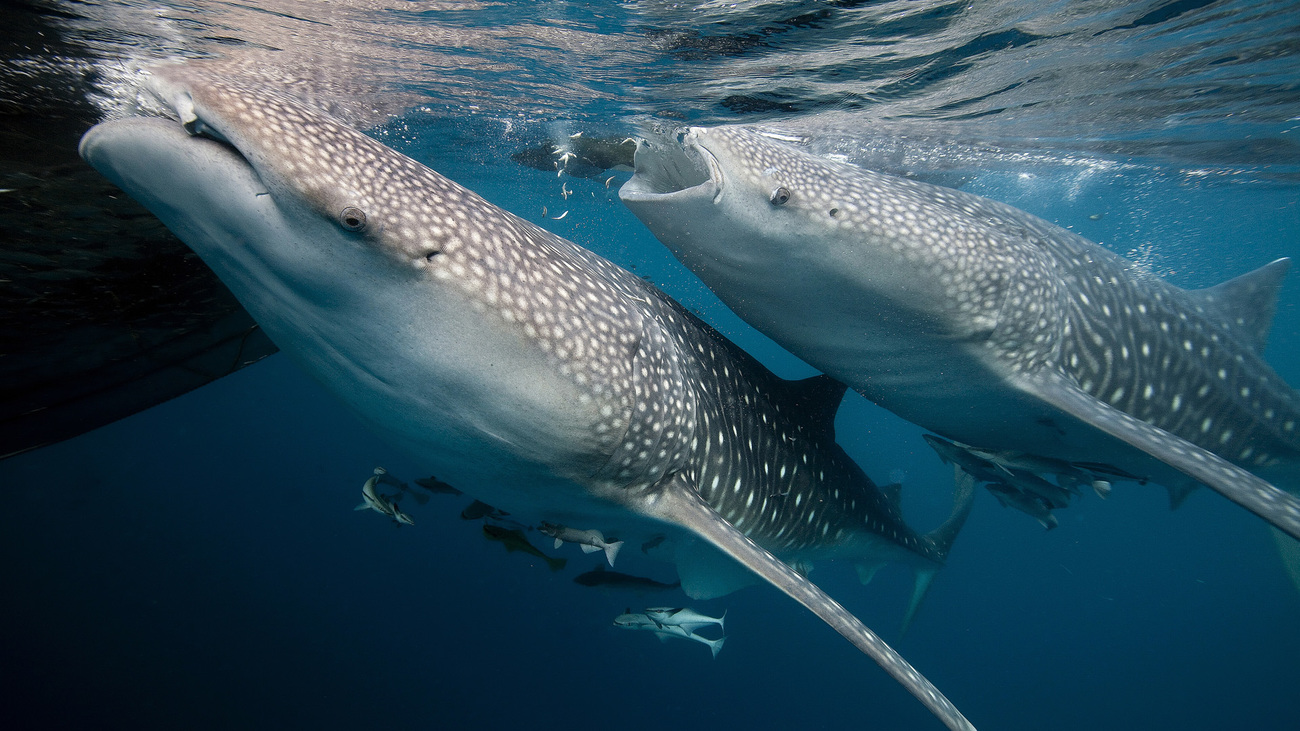
Hawaiian honeycreepers are a group of birds in the finch family found only in Hawaiʻi. These small birds survive best at higher-altitude habitats, where they are less likely to be impacted by human activity, the temperatures are cooler, and there are fewer mosquitoes. But as temperatures rise, mosquitoes move to higher elevations, carrying with them avian malaria and avian pox. Climate change is also hastening the growth and spread of invasive plant and animal species.
Five Hawaiian honeycreeper species were recently declared extinct and removed from the US Endangered Species Act: the Kauaʻi akialoa, Kauaʻi nukupuʻu, Maui ākepa, Maui nukupuʻu, and poʻouli.
Animals across the planet are threatened by climate change, facing habitat loss and degradation, decreased food sources, and disrupted reproductive habits. If global temperatures continue to rise, more and more species will start to become vulnerable and head towards extinction. To learn more about how you can help fight climate change, check out our list of ideas.
IFAW is working to combat climate change and protect wildlife around the world.
Our work can’t get done without you. Please give what you can to help animals thrive.
Unfortunately, the browser you use is outdated and does not allow you to display the site correctly. Please install any of the modern browsers, for example:
Google Chrome Firefox Safari